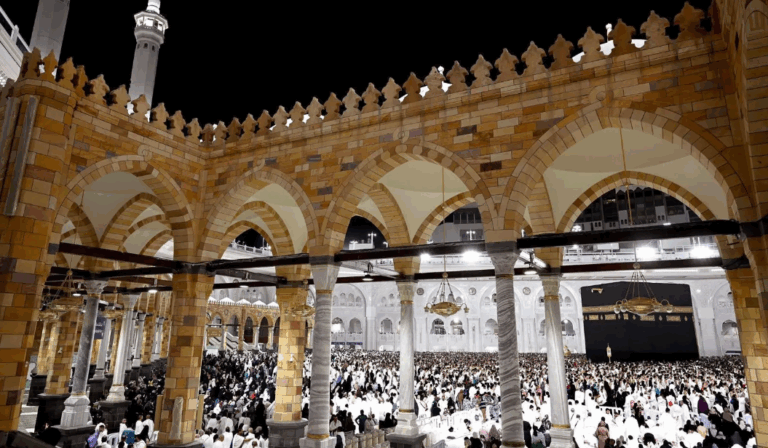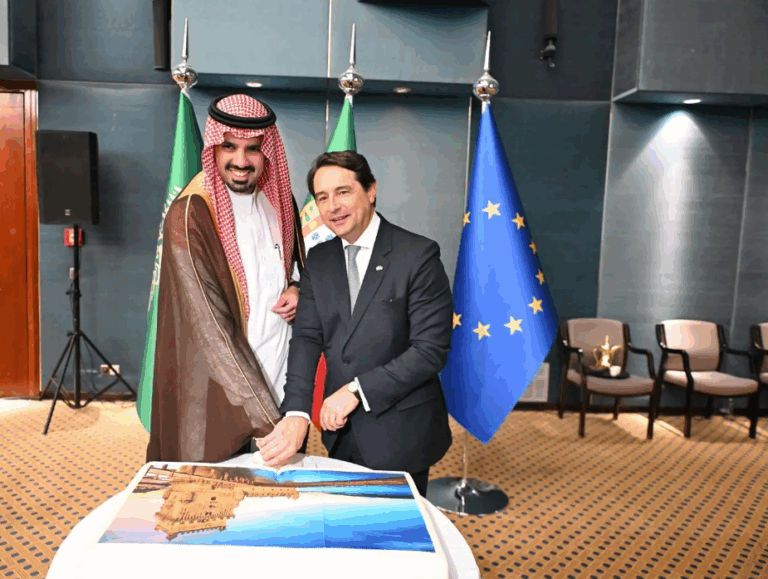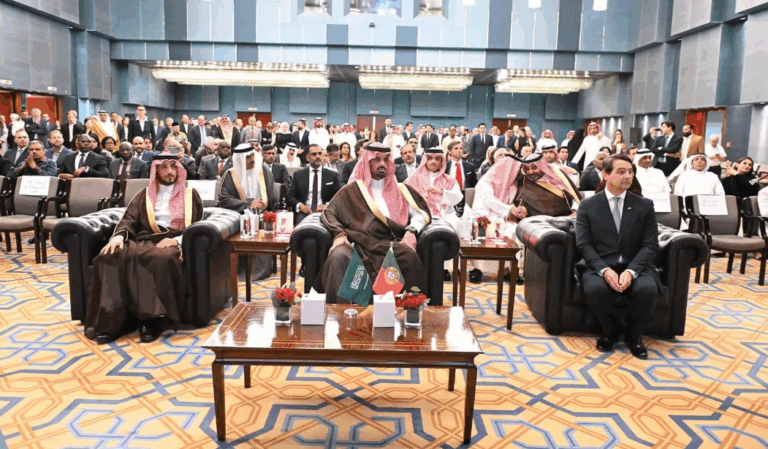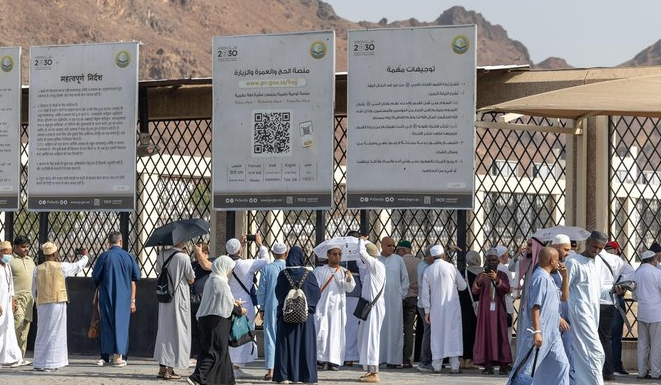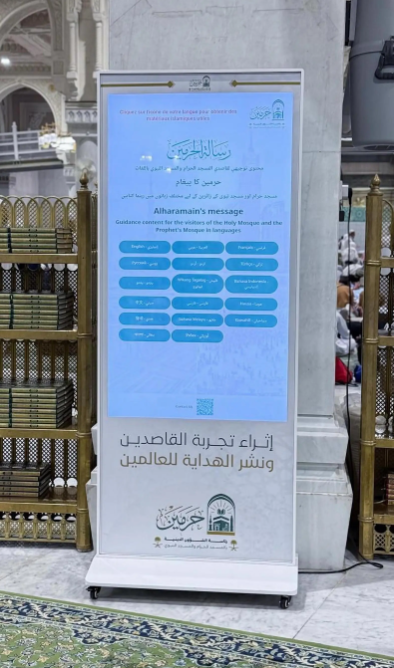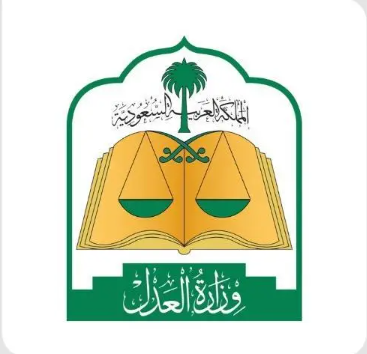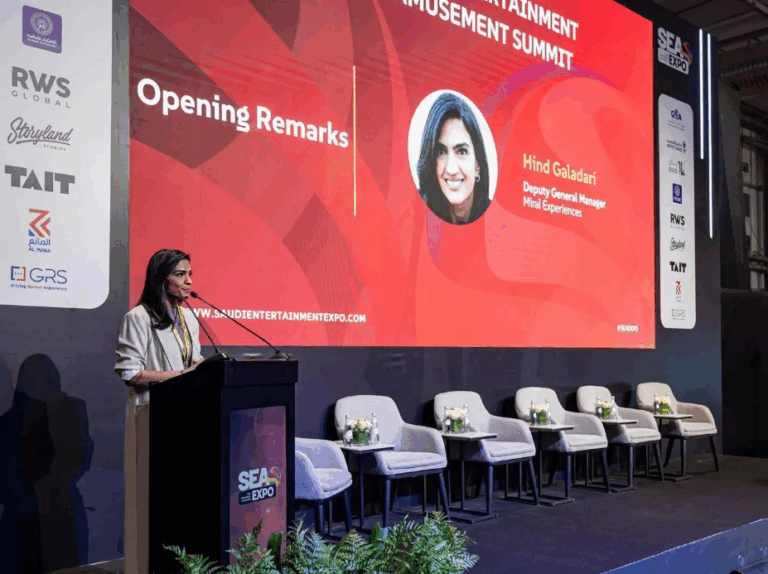**Título:** Camel Heritage Tools Unveiled at Festival
**Intro:**
At the King Abdulaziz Camel Festival, the Heritage Commission spotlights Al-shaddad and Al-ja’ed—traditional tools central to Arab camel husbandry. These artifacts, blending practicality and artistry, reflect centuries of nomadic ingenuity, offering visitors a window into the enduring bond between camels and cultural identity in the Arabian Peninsula.
**Factbox:**
– **Event:** King Abdulaziz Camel Festival, Al-Sayahid (Dec 26, 2024).
– **Tools:** Al-shaddad (wooden camel seat/saddle holder) and Al-ja’ed (engraved leather cover for sun/cold protection).
– **Significance:** Symbols of nomadic resilience, crafted with functional and aesthetic mastery.
– **Goal:** Preserve cultural heritage tied to camels, vital to Arab history. *(50 words)*
**Exploring Tradition at the King Abdulaziz Camel Festival: The Legacy of Al-Shaddad and Al-Ja’ed**
*Al-Sayahid, December 26, 2024* — The King Abdulaziz Camel Festival, a vibrant celebration of Saudi Arabia’s cultural heritage, is once again captivating visitors with its blend of tradition and modernity. Among its many attractions, the Heritage Commission’s pavilion stands out, offering a fascinating window into the tools that shaped the daily lives of nomadic Bedouins and their enduring bond with camels. At the heart of this exhibition are two iconic artifacts: **Al-shaddad** and **Al-ja’ed**. These tools, steeped in history and artistry, reveal the ingenuity of a people whose survival and identity were intertwined with the desert and its “ships of the sand.”
—
### **Al-Shaddad: The Nomad’s Multifunctional Companion**
Perched atop a camel’s hump, the **Al-shaddad** is far more than a simple seat. Crafted from sturdy wood, this structure served as a shepherd’s throne during long treks across arid landscapes. Its design reflects a deep understanding of desert life:
– **Functionality:** The Al-shaddad doubles as a storage system, securing saddles and a pair of woolen bags that carried essentials like dates, water, and tools. This innovation allowed shepherds to travel light yet prepared, embodying the nomadic ethos of efficiency.
– **Ergonomics:** Curved to fit the camel’s hump and the rider’s posture, its design minimized fatigue during days of travel. The elevated position also gave shepherds a vantage point to scout for grazing areas or hazards.
– **Cultural Symbolism:** Beyond utility, the Al-shaddad represents the camel’s role as a lifeline. It facilitated trade, migration, and communication, weaving camels into the social and economic fabric of Arab history.
—
### **Al-Ja’ed: Where Craftsmanship Meets Survival**
If the Al-shaddad is the backbone of desert travel, the **Al-ja’ed** is its protective skin. Made from meticulously tanned leather (stripped of hair for durability), this covering shields both rider and saddle from the desert’s extremes:
– **Adaptive Design:** The Al-ja’ed acts as a barrier against scorching sunrays and biting cold, its thick leather insulating the shepherd. During sandstorms, it could even be pulled over the face for protection.
– **Artistic Expression:** Beyond function, the Al-ja’ed is a canvas for heritage. Artisans adorned it with geometric engravings and dyed it in vibrant hues using natural pigments. Delicate fringes along its edges added a touch of elegance, transforming everyday gear into a cultural statement.
– **Legacy of Skill:** The precision required to craft the Al-ja’ed—from tanning hides to hand-stitching details—showcases generational knowledge. Each piece tells a story of patience and pride in craftsmanship.
—
### **Camels: The Soul of Bedouin Identity**
The Heritage Commission’s exhibition underscores how tools like Al-shaddad and Al-ja’ed are extensions of the Arab-camel relationship. Camels were not merely beasts of burden but partners in survival, enabling exploration, trade, and storytelling under starlit skies. The festival’s pavilion immerses visitors in this symbiosis:
– **Interactive Displays:** Visitors can examine replicas, watch demonstrations of tool assembly, and even witness traditional saddle-making techniques.
– **Historical Narratives:** Panels and guides explain how these tools evolved alongside Bedouin life, adapting to environmental challenges without losing their cultural essence.
—
### **Preserving Heritage for Tomorrow’s Generations**
The King Abdulaziz Camel Festival goes beyond nostalgia; it is a proactive effort to safeguard intangible heritage. By showcasing Al-shaddad and Al-ja’ed, the Heritage Commission highlights:
– **Cultural Continuity:** These artifacts bridge past and present, reminding younger generations of their ancestors’ resilience and creativity.
– **Sustainable Wisdom:** In an era of climate change, the resourcefulness embedded in traditional tools offers lessons in sustainability and adaptation.
As visitors leave the pavilion, they carry with them not just knowledge of Al-shaddad and Al-ja’ed, but an appreciation for how culture is woven from practicality, beauty, and an unbreakable bond with the land. The festival, through such exhibitions, ensures that the whispers of the desert—and the camels that carried them—continue to echo in the modern world.
*Plan Your Visit: The Heritage Commission’s pavilion is open daily at the King Abdulaziz Camel Festival until January 10, 2025. Don’t miss live craft demonstrations and storytelling sessions!*
—
**Keywords:** King Abdulaziz Camel Festival, Heritage Commission, Al-shaddad, Al-ja’ed, Bedouin tools, Saudi cultural heritage, nomadic craftsmanship, camel history.
*Image suggestion for WordPress:* Feature a high-resolution image of Al-shaddad and Al-ja’ed displayed at the pavilion, with intricate engravings visible. Add a second image of a craftsman demonstrating traditional leatherworking techniques.*
**FAQs: Heritage Commission Pavilion at King Abdulaziz Camel Festival**
1. **What is the primary goal of the Heritage Commission pavilion at the King Abdulaziz Camel Festival?**
The pavilion aims to educate visitors about traditional tools like Al-shaddad and Al-ja’ed, showcasing their historical, functional, and cultural roles in Arab camel husbandry and nomadic life.
2. **What are Al-shaddad and Al-ja’ed, and why are they significant?**
Al-shaddad is a wooden camel-mounted seat and saddle holder, while Al-ja’ed is its protective leather cover. Both symbolize Arab ingenuity and the deep bond between camels and their handlers.
3. **How did Al-shaddad enhance the efficiency of nomadic shepherds?**
Its design allowed shepherds to securely carry wool bags and saddles during desert journeys, ensuring comfort and practicality while managing camels over long distances.
4. **What materials and craftsmanship define Al-shaddad’s structure?**
Crafted from durable wood, Al-shaddad’s minimalist yet robust design reflects resourcefulness, tailored to withstand desert conditions while supporting the shepherd’s daily tasks.
5. **How does Al-ja’ed protect against extreme desert climates?**
Made from hairless tanned leather, it shields users from scorching sun and cold nights, demonstrating adaptive design for survival in harsh environments.
6. **What artistic elements distinguish Al-ja’ed?**
It features intricate engravings, vibrant dyes, and delicate fringes, highlighting the blend of functionality and artistic expression in traditional Bedouin craftsmanship.
7. **Why are these tools central to Saudi Arabia’s cultural heritage?**
They embody historical practices of camel husbandry, reflecting how camels shaped daily life, trade, and survival, making them symbols of national identity and tradition.
8. **How does the festival contribute to preserving such heritage?**
By displaying these artifacts, the festival raises awareness of their historical value, fostering pride and encouraging younger generations to safeguard ancestral knowledge.
9. **What role did camels play in Arab history beyond transportation?**
Camels were vital for milk, wool, and companionship, enabling nomadic life and trade routes, and remain cultural icons of resilience and Arab heritage.
10. **How do Al-shaddad and Al-ja’ed work together functionally?**
Al-shaddad provides structural support for seating and storage, while Al-ja’ed enhances comfort and protection, together optimizing the shepherd’s efficiency during travel.
11. **What can visitors learn about desert adaptability from these tools?**
The tools exemplify how historical communities innovated with local materials to create solutions tailored to extreme heat, cold, and long journeys.
12. **How does Al-ja’ed’s design reflect Bedouin artistic traditions?**
Its detailed patterns and fringework showcase storytelling through craft, often indicating tribal identity or environmental motifs, preserving aesthetic traditions alongside utility.
13. **Why is educating the public about these tools important today?**
Understanding their use connects modern audiences to ancestral wisdom, emphasizing sustainability and respect for heritage in a rapidly modernizing world.
14. **How were Al-shaddad and Al-ja’ed traditionally maintained?**
Regular oiling of leather and wood repairs ensured longevity, with knowledge passed down through generations to preserve functionality and appearance.
15. **What broader cultural themes does the pavilion highlight?**
It underscores the camel’s symbolic role in Arab identity, illustrating how human ingenuity and environmental adaptation shaped a shared historical narrative.
**CTA (Llamado a la Acción):**
📅 *¿Listo para sumergirte en la riqueza cultural de Arabia?* No te pierdas la oportunidad de explorar el pabellón de la Comisión de Patrimonio en el Festival del Camello King Abdulaziz. Descubre en persona el ingenio de herramientas como Al-shaddad y Al-ja’ed, y vive la historia que conecta a los beduinos con sus cameles. ¡Visita la exposición antes de que finalice el festival y comparte tus fotos y reflexiones usando #CamelHeritage!
**Conclusión:**
La exhibición de Al-shaddad y Al-ja’ed en el festival no solo honra el legado de herramientas ancestrales, sino que también nos recuerda cómo la funcionalidad y el arte se entrelazan en la cultura árabe. Estas piezas simbolizan la adaptabilidad y creatividad de un pueblo que supo convertir desafíos del desierto en soluciones prácticas y hermosas. Al preservar y celebrar estas tradiciones, el Festival King Abdulaziz refuerza el valor de las raíces culturales como pilares de identidad, invitándonos a reflexionar sobre el pasado para inspirar un futuro conectado con nuestra herencia.
**Agradecimiento:**
Agradecemos a la Comisión de Patrimonio por su incansable labor en proteger y difundir el legado cultural de Arabia. Su dedicación permite que generaciones actuales y futuras aprecien la profundidad histórica de herramientas como Al-shaddad y Al-ja’ed. ¡Y a ti, querido lector, gracias por unirte a este viaje por la tradición! Tu interés ayuda a mantener viva la memoria de quienes forjaron, con ingenio y esfuerzo, la historia que hoy compartimos. 🌍✨
*¿Te gustaría saber más sobre otras tradiciones árabes?* Déjanos tus comentarios y síguenos para descubrir más historias como esta. ¡Hasta la próxima aventura cultural! 🐪🌞



